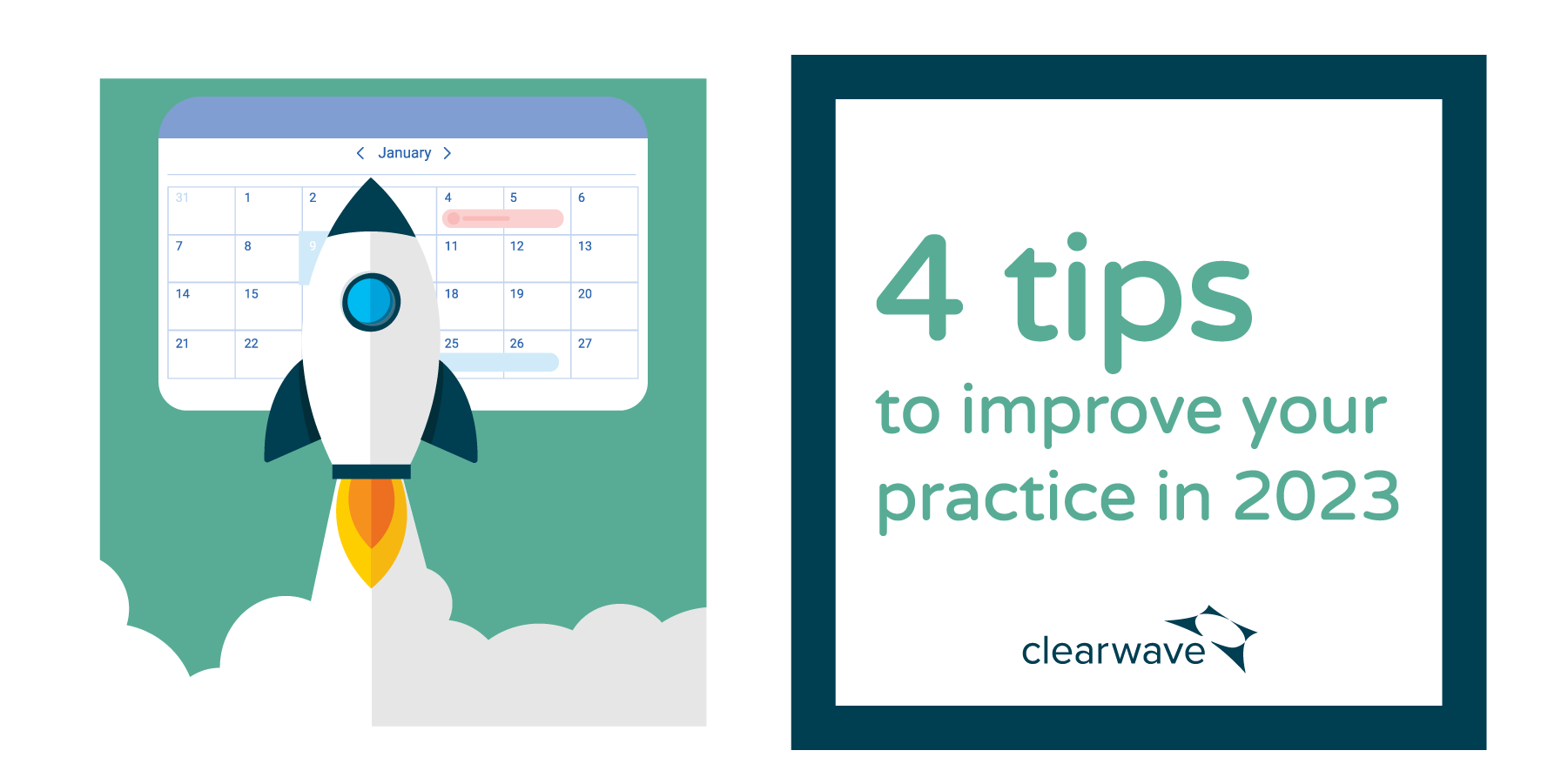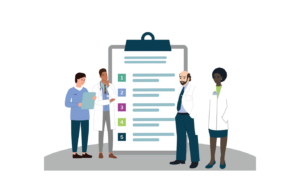Planning Ahead For 2023 – How to Solve For Operational Inefficiencies

When looking ahead to 2023, it’s important to consider ways to improve the function and success of your practice in the new year. Determining the best ways to solve your practice’s operational inefficiencies will improve your practice’s ability to minimize waste in terms of time, effort, and materials, while still providing high-quality patient care. The best place to start is figuring out what’s working at your practice and what isn’t.
Determine the Operational Inefficiencies Present at Your Practice
As a busy, patient-centered practice, operational inefficiencies may fall by the wayside in the day-to-day hustle. For many practices, inefficiencies center around billing or payment issues, patient communication or long patient wait times, for example. These issues can be difficult to combat all at once, but finding ways to solve these hurdles one by one will improve efficiency, workflow and reduce stress for both patients and staff.
Many practices look to improve multiple operational efficiencies at once, with a comprehensive patient engagement platform. With the right platform and support team, these practices can also get ahead of problem areas before practice leaders even realize they are present. Consider how you can leverage a reliable patient engagement platform to solve operational challenges, without burdening your existing staff.
Here’s how forward-thinking practices are using their patient engagement solution to maximize productivity and cash flow while providing a top-line patient experience:
1. Automate Tedious Administrative Tasks
Many businesses, including healthcare facilities and medical practices, have had to make changes and adjustments in their workflow patterns due to staffing shortages and patient safety over the past few years. As a result, many organizations looked to automate more and more tasks. Today, many of these organizations have been implementing digital patient engagement platforms to support check-in, scheduling, and patient communications. Practice administrators and leaders are now evaluating those solutions. Take a similar approach and review what’s working well with your digital-first patient engagement platform. You may uncover some of your tools are actually putting additional burdens on your staff. Automation is only helpful at driving efficiencies when it works, consider any of your patient engagement solutions that are underperforming.
As you review your existing automation tools and look for more tedious tasks to automate, consider appointment reminders. With effective automated appointment reminders you can keep practice schedules running smoothly and reduce the burden on your staff. Your staff likely don’t have the time to call on patients to notify them of their upcoming appointments. Similarly, when appointments get missed, staff are left to deal with schedule disruptions, and frustrated patients and physicians. Automated reminders that work can significantly relieve staff burdens and no-shows.
2. Encourage Patient Pre-Registration
Long patient wait times is one of the most common complaints from patients and one of the most common operational inefficiencies practices face. Reduce patient intake and wait time by integrating patient pre-registration into your patient engagement system. Implement an online pre-registration process into your practice. When you send reminders, prompt patients to pre-register with their insurance cards and other intake information, ahead of their appointment. In addition to improving the patient experience, encouraging pre-registration will also reduce the amount of time needed for communication between front desk staff and the patient during the check-in process.
Making this shift means the patient won’t need to re-enter this specific information at check-in and will only have to answer on-the-spot check-in information and make their co-pay. By having the patient pre-register you can create operational efficiencies in your data capture, patients are more likely to provide accurate data, versus your receptionist transferring pen and paper data into the system after check in. Many practices also gather pre-registration data to help their staff get ahead of insurance verification tasks, before the patient even arrives at the office. Simply adding pre-registration links and workflows into your patient engagement approach can drive significant operational efficiencies to many areas of your practice. It’s a simple switch, that lends great improvements.
3. Eliminate Time Spent Verifying Insurance Eligibility
With insurance eligibility software, you can accelerate cash flow for your practice. Many patient engagement platforms offer ways to improve collection issues. However, practices find the most success with reliable, real-time insurance eligibility verification platforms. Consider an insurance eligibility tool that will test insurance eligibility at multiple patient touchpoints, like scheduling, pre-registration and check-in. In addition to batch verification testing, these touch points provide real-time data that allow your staff to easily determine what needs to be done to sort eligibility issues early on, saving them the time and hassle of calling on payers and navigating complex payment needs. If your current insurance verification tools take too long to process data, or don’t provide your staff with a quick way to test for eligibility, your staff won’t be able to request payments at point-of-service or answer patient insurance questions as needed. Find a tool that takes this lag time out of your process so you can reduce a host of operational inefficiencies related to collections and payments.
Through insurance eligibility checks, patients and staff can know copayment amounts and verify benefits to ensure coverage has not lapsed. Free your team from this time-consuming task, and automate insurance eligibility verification so that they can shift to higher-value activities. There are many ways to make eligibility easy and boost your bottom line through eligibility verification.
4. Improve the Patient Scheduling Process
Another common hurdle practices face is patient scheduling. Patient engagement platforms offer convenient and efficient methods of online scheduling for your patients. Online scheduling can optimize staff time by eliminating or reducing the time-consuming task of scheduling patients at the end of their visit or over the phone. Smart self-scheduling tools that are connected to your patient engagement systems and EHR/PMS will also auto-updates as your schedules update, meaning patients will always see the most up-to-date schedule when making appointments. This automated update allows your practice to fill gaps and provide patients a quick and easy way to select an appointment, versus getting on the phone with staff and waiting for them to navigate the schedule for openings.
Implementing a patient engagement platform that improves operational inefficiencies related to patient scheduling can be an excellent way to make sure you are excelling in the new year. In many cases, implementing online patient scheduling options improves patient satisfaction and encourages follow-up.
An exceptional self-scheduling patient engagement platform will:
- Provide practices the ability to customize workflows for specific patient and appointment types, demographics, providers, etc.
- Give patients 24/7 access to make appointments so they don’t have to wait for the practice to open for them to request and schedule an appointment.
- Provide PMS/EMR integrations to ensure patient historical data is leveraged in scheduling decisions.
- Offer waitlist options so patients can request to be NextUp for an appointment date and time that best fits their needs, etc.
Improve Operational Inefficiencies with a Complete Patient Engagement Platform
Clearwave’s comprehensive patient engagement platform has helped many practices improve and solve for operational inefficiencies they experience. The Orthopedic Associates of Central Maryland (OACM) Division of the Centers for Advanced Orthopedics is a prime example of how practices can increase efficiency and patient experience at the same time. OACM has six locations and was looking to automate manual tasks to reduce staff burdens, increase collections and most importantly, tailor their engagement approach to best serve their patients. See how OACM optimized patient engagement and the operational efficiencies their practices saw as a result.
Clearwave can help your practice achieve similar efficiencies. Improve your practice’s patient workflows and reduce staff burden by integrating reliable and helpful patient engagement tools.
Do you want to learn more about how Clearwave can help you solve your operational inefficiencies in 2023? Schedule a demo today!




